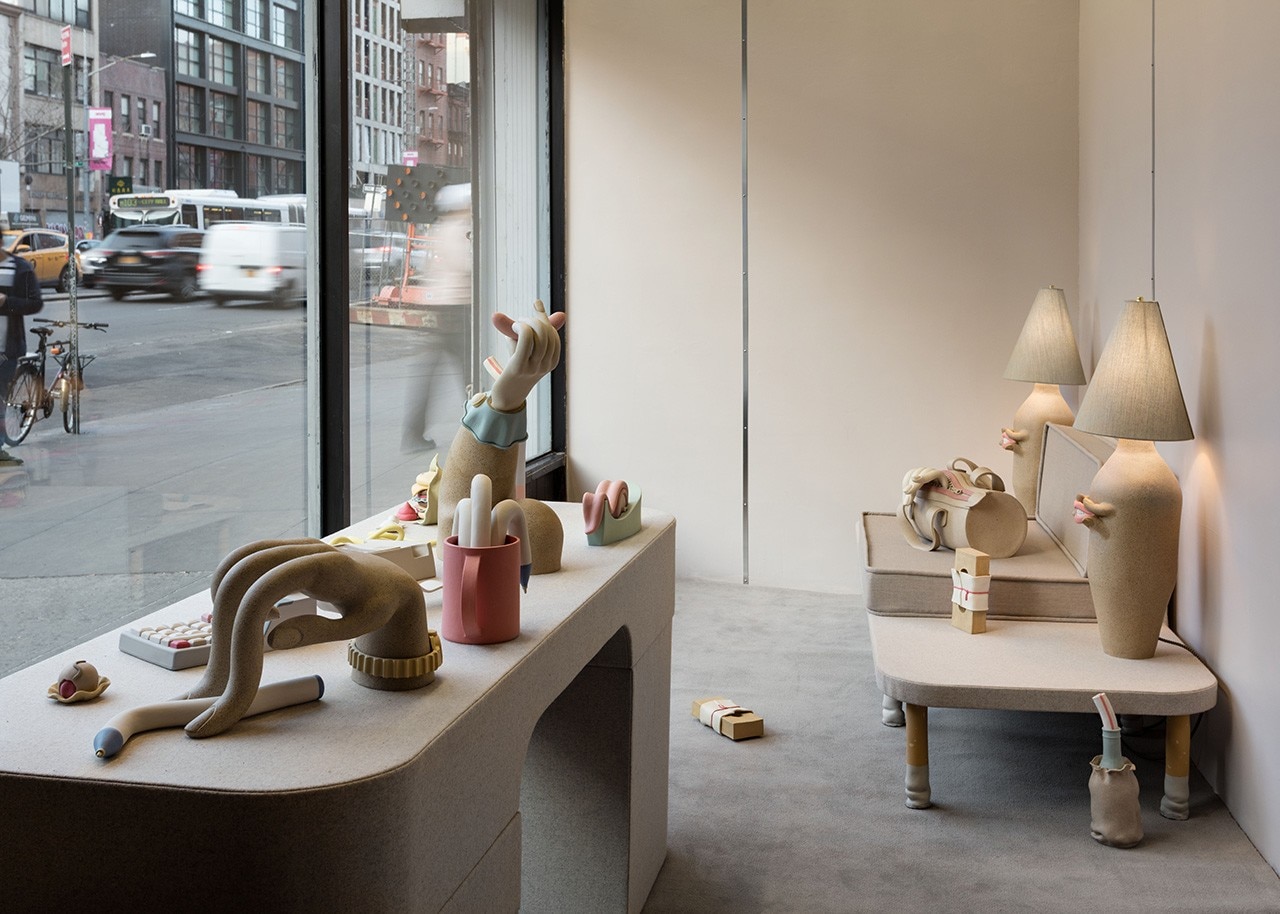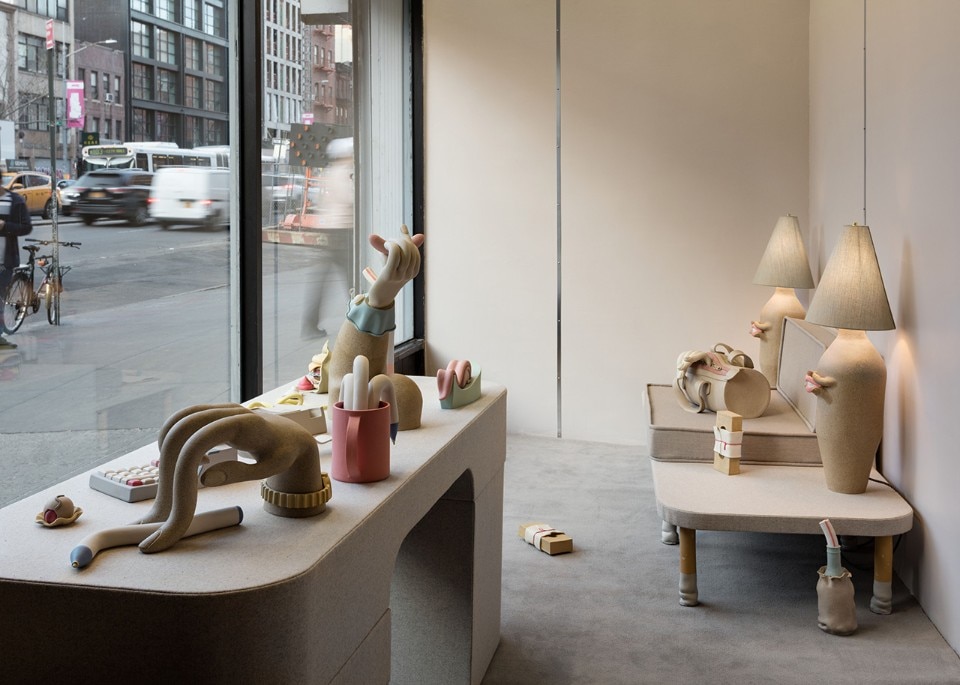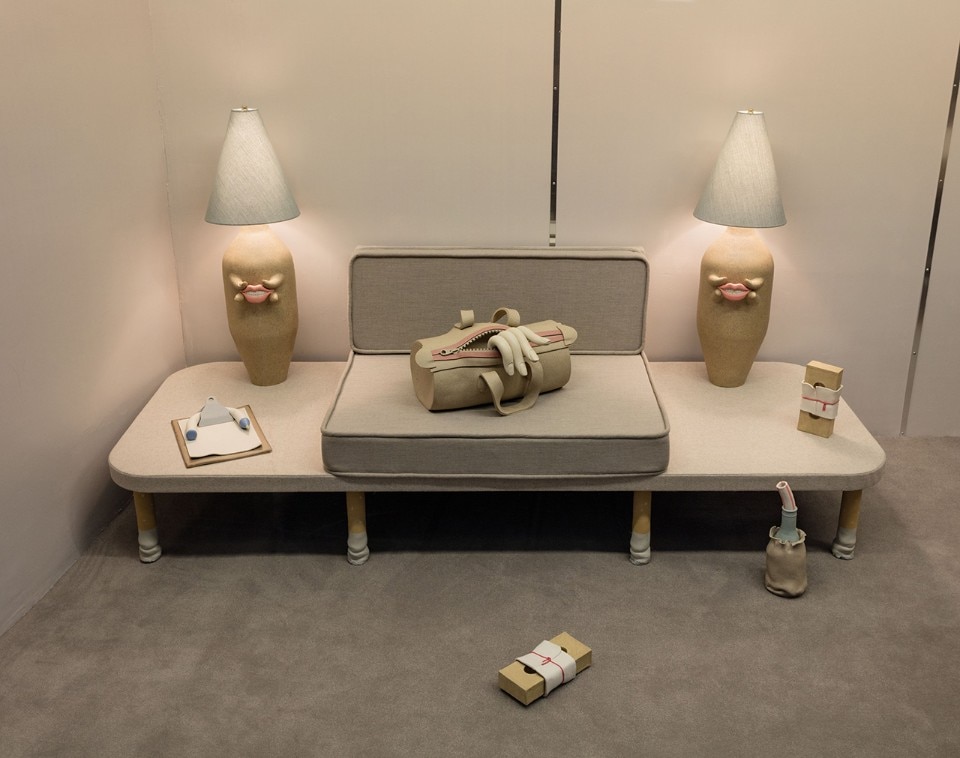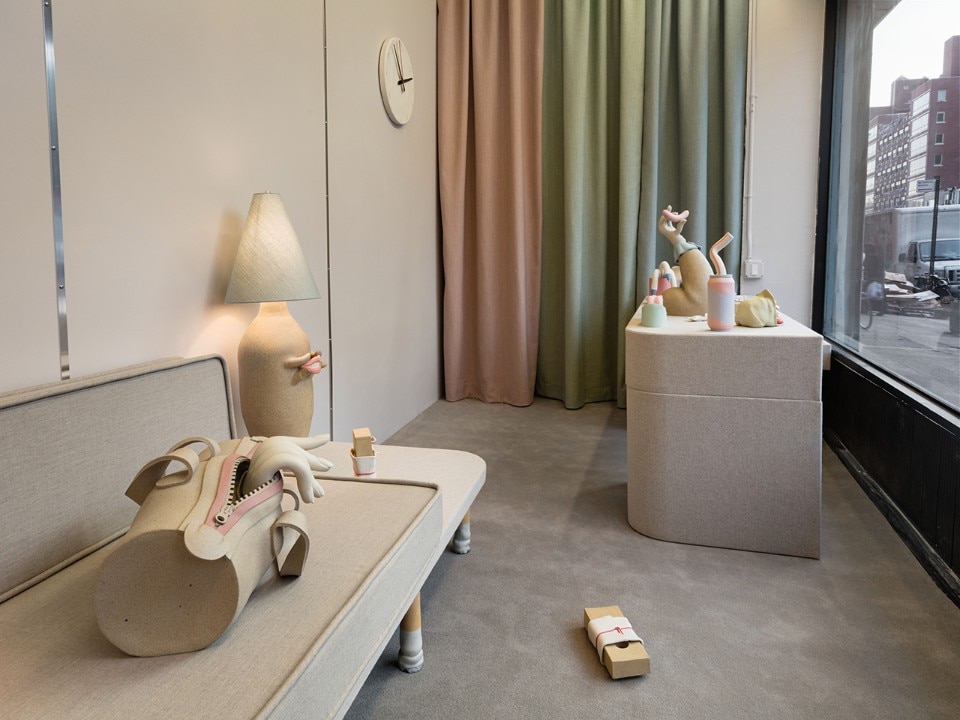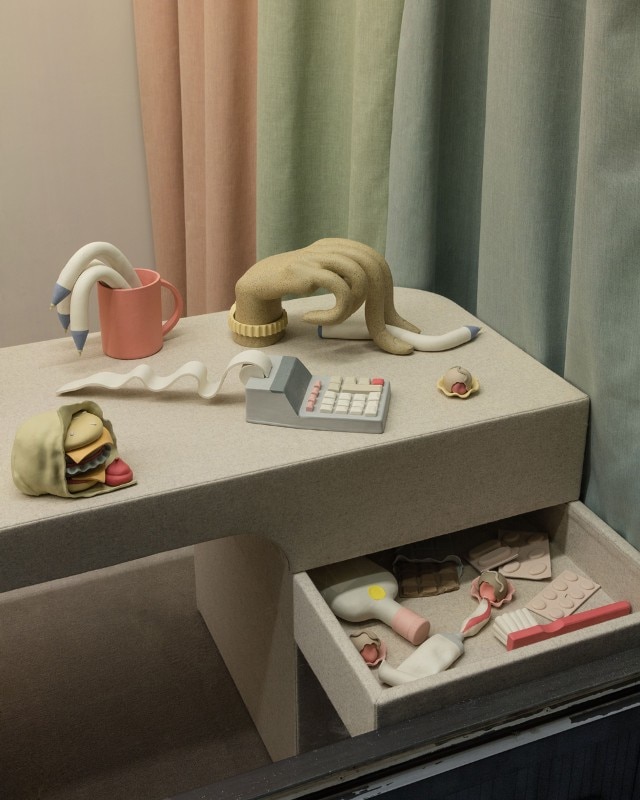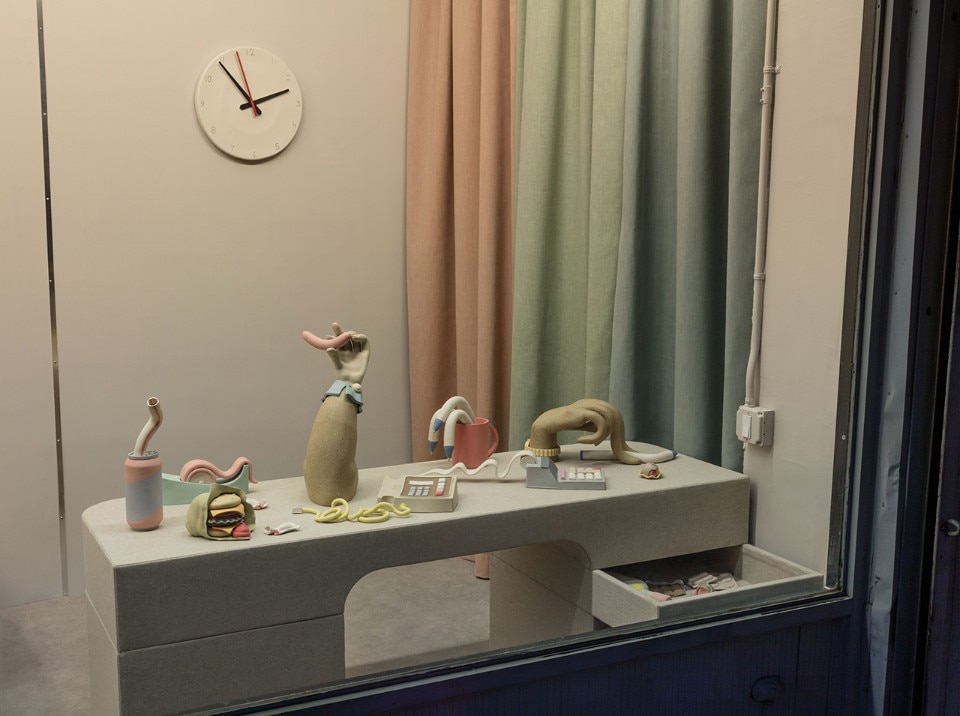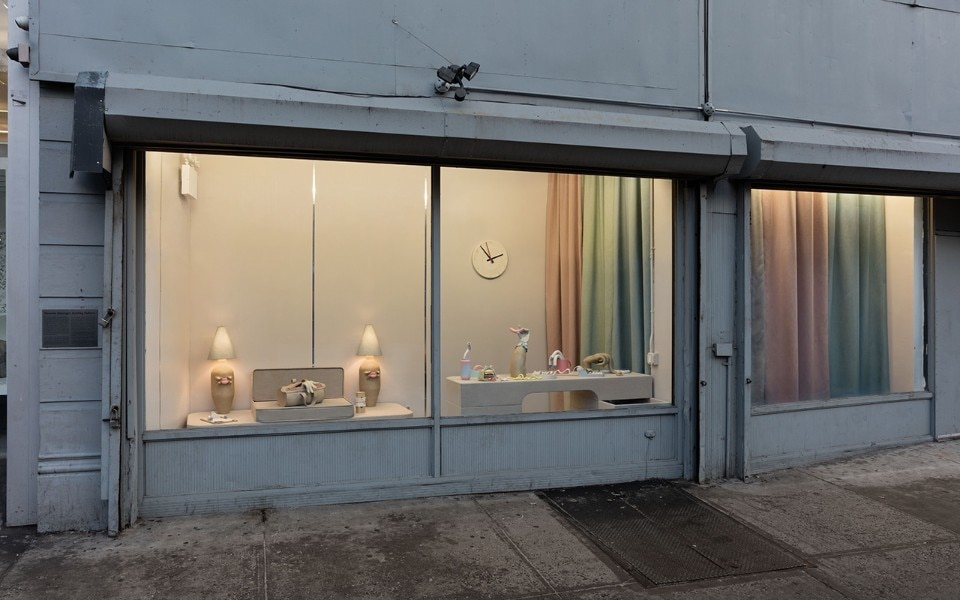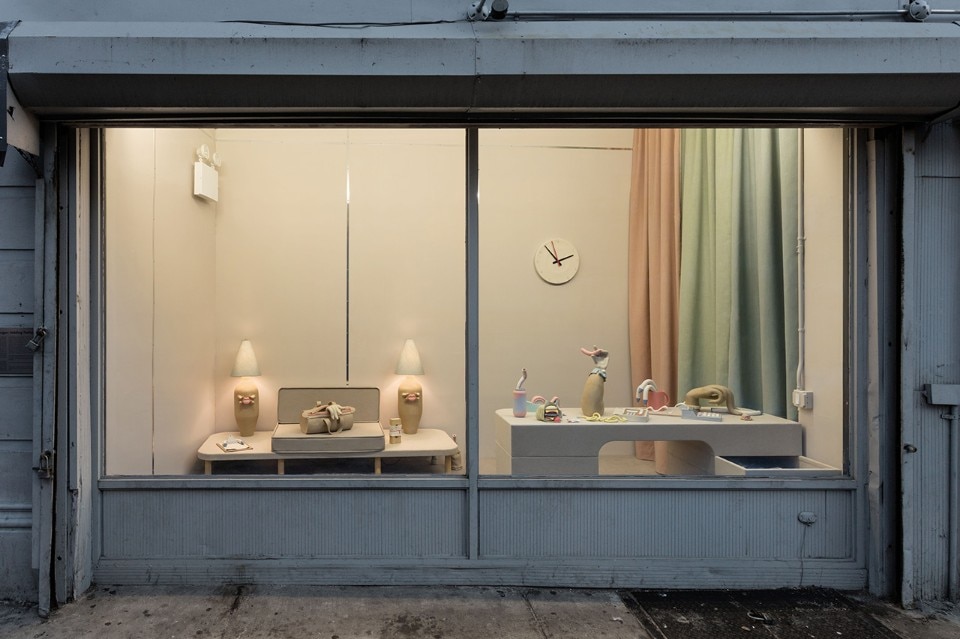The window display – an interface between the street and the interior, and an intrinsic feature of the city dweller’s walk that impresses a physical reminder of bygone modes of marketing and commerce. In their prevalence, we often stop and look only at those in which something is slightly off, or eye-catching. And when we do, we catch glimpses of the urban landscape in the glass reflection – a fellow walker’s trace, a façade, ourselves. The “Storefront Window” of New York’s New Museum is a space that so arrests the glance since it came to be in 1979. The following year a young Jeff Koons held his first solo exhibition there, a display of lit-up vacuum cleaners, that teased out and blurred the line between art and commerce.
Now located at 235 Bowery, the New Museum relaunched this window display space in 2017, and the current exhibition, Genesis Belanger: Holding Pattern, is ambiguous in its own right. Behind three large windows a receptionist’s office/waiting room is staged, fabricated almost entirely of porcelain and stoneware ceramics by artist Genesis Belanger. Curated by Margot Norton, the everyday ‘non-place-ness’ of the scene is bolstered by its neutral colour: walls, carpeting and furniture in shades of beige transport viewers to an anonymous moment somewhere between the 1970s-90s. But nothing in Belanger’s world is definitive or obvious. The work encourages a kind of looking that lingers and cuts through surfaces. In Holding Pattern, the inconspicuous aesthetic fades as viewers notice colour – a captivating panoply of matte pastels – and detail.
To the right is a desk upon which tools of work are strewn: telephone, calculator, tape dispenser and cup of pens. Other remnants of a bodily presence include an uneaten hamburger, a drinks can, packets of ketchup and a drawer left open to reveal life-sustaining devices – pill packets, a chocolate bar, a bottle of liquor, a squirting tube of toothpaste, a toothbrush. The seating area to the left, cushions on a surface flanked by two lamps, also contains familiar objects,
a clipboard with pen, a bag: the things we tend to overlook, in the liminal spaces to which we typically don’t assign much meaning. A wall-hung clock and curtains in vertical stripes of pale pink, blue-gray and mint green complete the scene.
Globular and supple, the objects play in a fantasy world. Drawing from her repertoire of form, colour and iconography, Belanger injects movement and whimsy into the picture, from the coiled yellow phone wires to the ribbon of paper spiraling from the calculator. Yet darkness shades whimsy, in places movement becomes exaggerated so that forms appears limp – the pens droop and wither. We’re reminded of the Dada or Surrealist object that plays as it hints at the uncanny, the violent, the unconscious – cigarettes that prop up the sofa, the tongue looped around the tape dispenser, bricks wrapped in notes. Most significant and disquieting is the female personification of things – the arm growing from the desk, the bracelet-clad hand languidly holding a pen, the pink lips that adorn the lamps. Like any good window display, Belanger’s work inspires close looking and consuming: in this case the viewer is left with a heightened perception of the ordinary world and its absurdities and evils, from the mass-manufacturing of patriarchic capitalism to chemical dependency.


